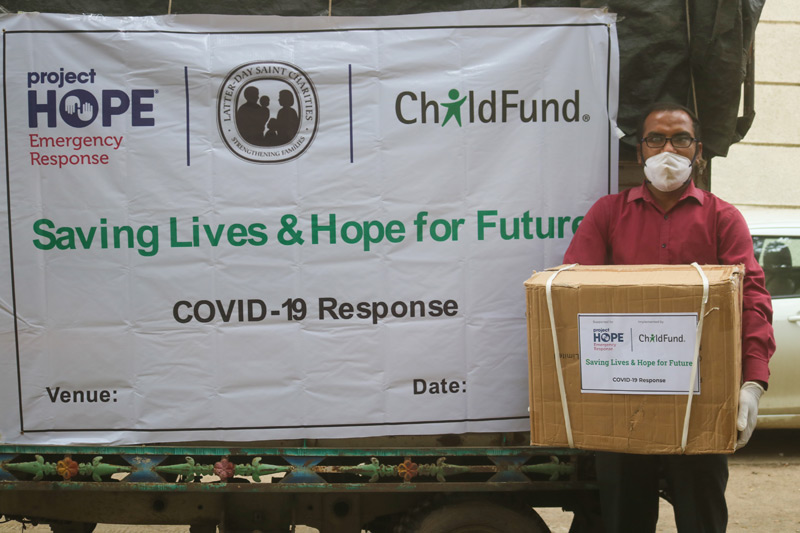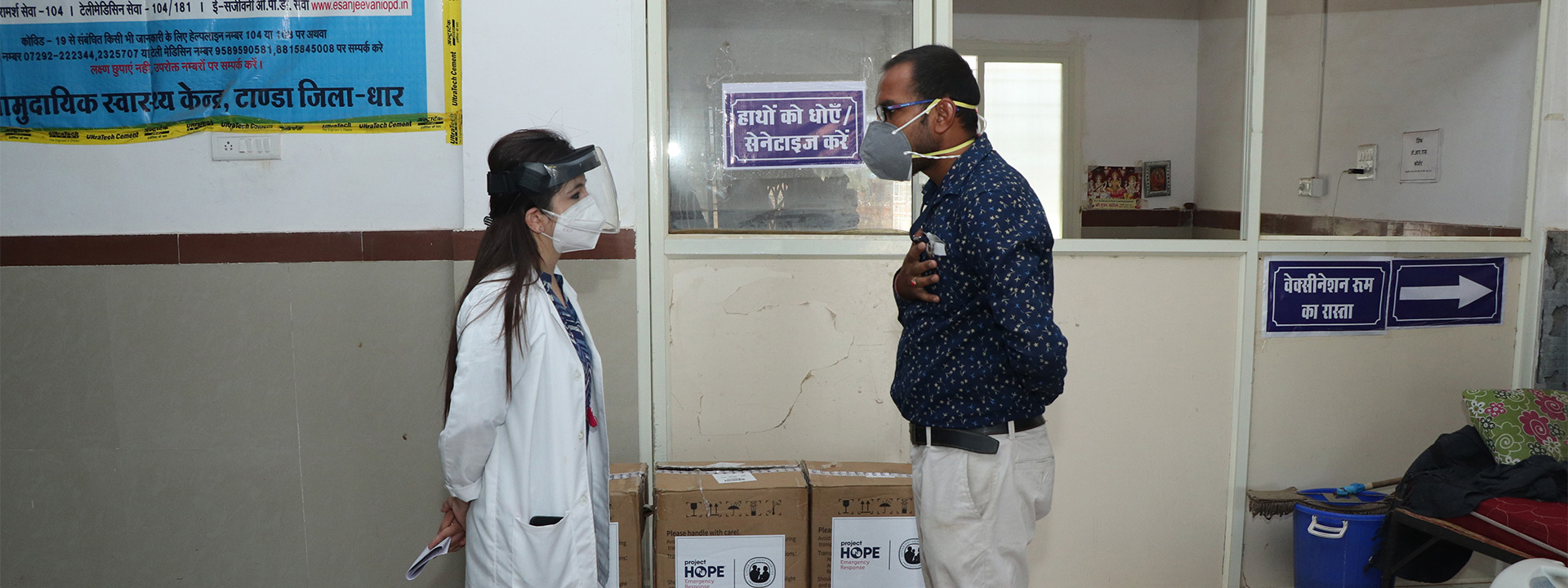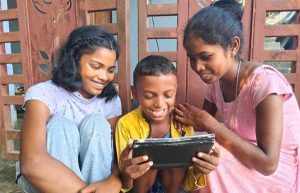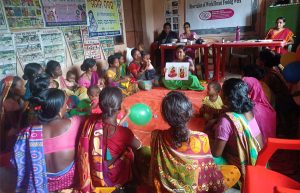 Mahesh Patidar is a ChildFund hero who has been working throughout the pandemic to help people in Madhya Pradesh.
Mahesh Patidar is a ChildFund hero who has been working throughout the pandemic to help people in Madhya Pradesh.
Mahesh Patidar works as a Project Coordinator in Madhya Pradesh (MP). Since March 2020, as the country overcomes the COVID-19 crisis, Mahesh has been working tirelessly to reach out to the most vulnerable, affected communities in the remote districts of Dhar, Jhabua, and Alirajpur, in MP.
Through his selfless dedication and hard work, ChildFund’s COVID response efforts – food and hygiene kits to families, support to Tuberculosis patients, essential medical equipment for COVID care centers, and PPE kits for frontline workers – have helped thousands of people who needed support in their hardest of times.
We interviewed him to hear his experience of being ChildFund’s dedicated frontline worker during the pandemic:
• What work did you do during COVID’s 1st and 2nd waves?
“There was a lot of fear in the team during the first COVID-19 wave because little was known about the disease and how it spreads. But, after taking precautions, we courageously went to work on the ground.
During the first wave, one of the first communities we reached out to were the Tuberculosis (TB) patients under the Mukti project because we realized that they were extremely vulnerable during the crisis.
We visited these patients at home, supported their medicinal needs, distributed nutritional food baskets to them, and linked them to necessary government schemes. Government officials, impressed by our support, also referred new to include to Mukti. Concurrently , we supported other communities with food and hygiene baskets, provided means and trainings to rebuild livelihoods, education, etc.
In the second wave, we were more than ready to go on the field and help people. We had a better understanding of COVID-19, most of us were vaccinated and we all had PPE kits. It was upsetting to see the struggles of the medical community to provide basic facilities in rural public health centers; precious lives were lost. Therefore, we were very enthusiastic when, with Project HOPE, we started working to provide community health centers (CHCs) at community and block levels with medical equipment so that patients get the necessary help when needed the most.”
• As per your observation, what was the situation on the ground at the community and hospital level during the COVID 2nd wave?
“It was upsetting to see the struggles of the medical community to provide basic facilities in rural public health centers; precious lives were lost. During field visits, when we visited the government COVID-care centers, we found how the centers were struggling – poor patients could not get admitted due to a shortage of equipment and beds which prevented them from getting timely life-saving treatment. Private hospitals were running out of beds too. The poor and marginalized suffered the most.”
• How did our support help the medical professionals? How did you feel while helping them?
“We were able to provide life-saving, basic medical equipment such as oxygen concentrators, masks, protective gears, etc. to many community health centers in the three districts. This helped doctors give critical treatment to stabilize patients at the center itself, decreasing the number of patients being referred to the district hospital and reducing their load considerably. They said they felt empowered to change the situation with all this equipment!
It was inspiring to see that our little help had renewed the doctors’ and staff’s vigor and courage to help people!”
• How did you feel while undertaking outreach and other activities for the community?
“We were there for the community at every step. We supported them with immediate and long-term support to help them tide over the COVID pandemic – from food to livelihoods; we also ensured that children continued learning.
Now that we have provided the medical equipment to health centers at community and block levels in far-flung areas, they will also be able to provide treatment as good as the private hospitals. They will be able to help in improving and saving the lives of thousands of people from marginalized communities.”
• While on the field in such uncertain times, what was your motivation to continue to work?
“When times were tough, I continued to work because I would think back about the thousands of COVID patients who were struggling for treatment, and that we had the power to help them. The hard work of my fellow colleagues, my responsibility towards this community and the smiles of recovering patients gave me courage to continue working even if I was exhausted.”
• Is there a particular experience or incident that really moved or affected you during the COVID response work, that you want to share?
“I knew a man who used to work in a private hospital whose wife had been diagnosed as COVID-19 positive. He would leave his two young children with the neighbors and go to one hospital after another to search for a bed for his wife. But he could not find her a bed.
We somehow managed to get her admitted in a government hospital. But, the hospital didn’t have a flow-meter, an inexpensive but essential medical equipment that monitors the strength of the lungs. He tried his best to arrange for it but private hospitals were selling it for three times the cost, just to earn profit. Ultimately, it was too late to save his wife’s life.
At that moment, I saw humanity die because people’s lives were being treated so poorly. This affected me a lot and I was determined to not let humanity suffer anymore. I am happy that with the efforts of ChildFund I can help save many families and keep humanity alive.”






